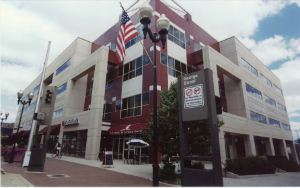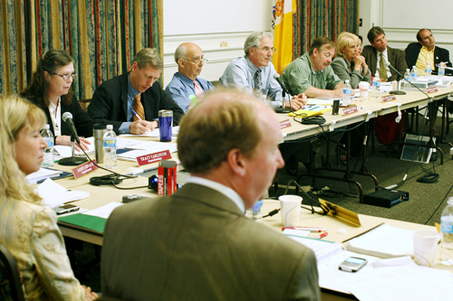New Jersey Future Blog
Transit, Past and Future?
August 24th, 2007 by Tim Evans
- New Jersey has an extensive public transportation network. NJ TRANSIT operates eight commuter rail lines, serving 149 stations; three light rail lines serving 60 stations; and a statewide network of buses. New Jersey also has two separate transit agencies—PATH and PATCO—that provide commuter rail service between Northern Jersey and Manhattan and Southern New Jersey and Philadelphia, respectively.
- At 9.6 percent, New Jersey is second only to New York in the percentage of residents who use public transportation to commute to work.
- Thanks to the extensive transit network, New Jerseyans don’t have to drive as much. New Jersey trails only New York, Hawaii, and Alaska in the lowest per capita vehicle miles traveled (VMT).
- These statistics reflect New Jersey’s history of investing in public transportation—a product, in no small part, of the state’s proximity to large population and employment centers and the fact that much of its development pre-dates the Interstate highway era. Despite the state’s relatively high level of transit use, however, there is still much more to be done if we are to reach the Governor’s stated goal of reducing greenhouse gas emissions by 80 percent by the year 2050.
- According to the Board of Public Utilities, the transportation sector, of which passenger vehicles comprise the lion’s share, contributes more than one third of the state’s greenhouse gases. Any successful reduction in emissions will therefore need to include ways to reduce auto dependency and encourage transit use.
A New Option: Bus Rapid Transit
One strategy to reduce driving involves bringing transit to areas that today are accessible exclusively by cars. To that end, NJ TRANSIT has been studying a new type of transit service, Bus Rapid Transit, in several locations in New Jersey, including Greater New Brunswick along Routes 18 and 27 and the Route 1 Corridor in Mercer and Middlesex counties.
Bus Rapid Transit, or BRT, is a transit system more akin to light rail than traditional bus service and has the potential to decrease automobile use and bring transit to underserved areas. Generally, BRT systems consist of specialized buses operating between dedicated stations along exclusive or preferential right of ways. Although the capacity of BRT is comparable to other rapid transit modes such as light rail, BRT systems can be built along existing rights of way and maintained at a significantly lower cost. Pioneered in Curitiba, Brazil, as a less expensive alternative to subway service, BRT has since spread throughout Latin America, Europe, Australia, and Canada. More recently, BRT systems have appeared in American cities including Los Angeles, Pittsburgh, and Miami. (More information about BRT can be found here.)
Reshaping Land Use
While BRT can play a significant role in reducing auto use and bringing quality transit to the suburbs, it cannot reach its full potential without accompanying land use changes along its route. Effective planning for transit must consider not only how to move passengers efficiently, but also what their options are upon arrival. Depositing riders at the edge of a parking lot or at the curb of a busy road will not encourage people to use the system. Mixed-use, transit-oriented development with pedestrian connections to surrounding areas should be encouraged around BRT stations. NJ TRANSIT should work with towns to ensure that supportive zoning is in place in the areas surrounding proposed BRT stations, so as to create an attractive pedestrian environment for future BRT riders. Such partnerships should play an important role in planning for BRT by providing certainty both to the town and to NJ TRANSIT as to the other’s commitment to the project.
Ultimately, reducing carbon emissions in New Jersey will require rethinking land uses in areas that are today auto dependent to encourage shorter trips, more walking, and increased transit use. BRT can bring us closer to that goal by providing quality, efficient transit in areas that today have few or no transit options and act as a catalyst for land use changes that will further reduce auto dependency.
If you have any questions about this issue of Future Facts, please contact Tim Evans, Research Director, or Jay Corbalis, Policy Analyst.
















